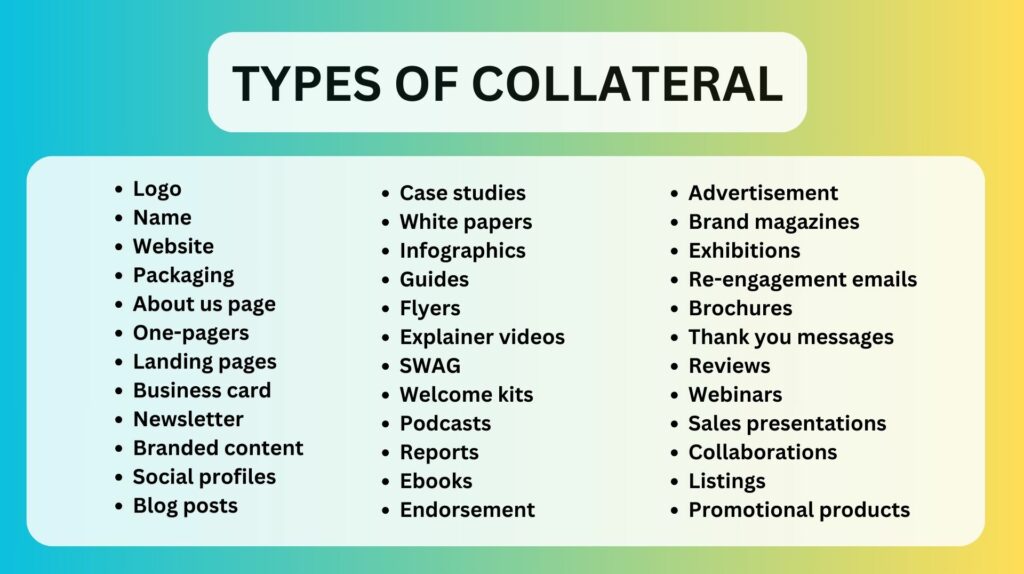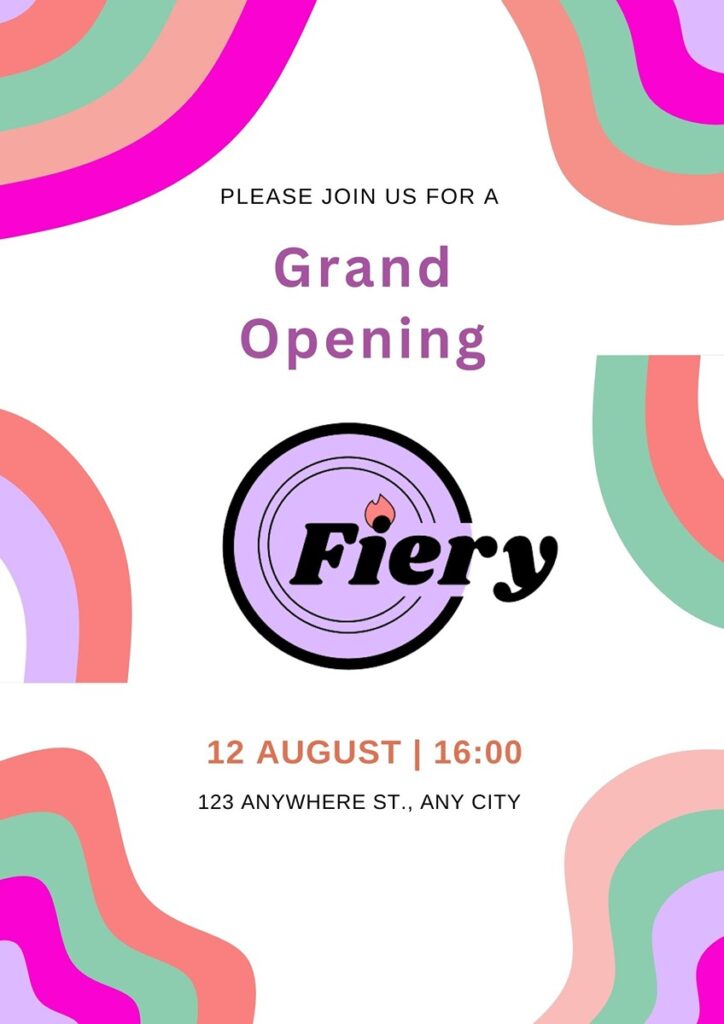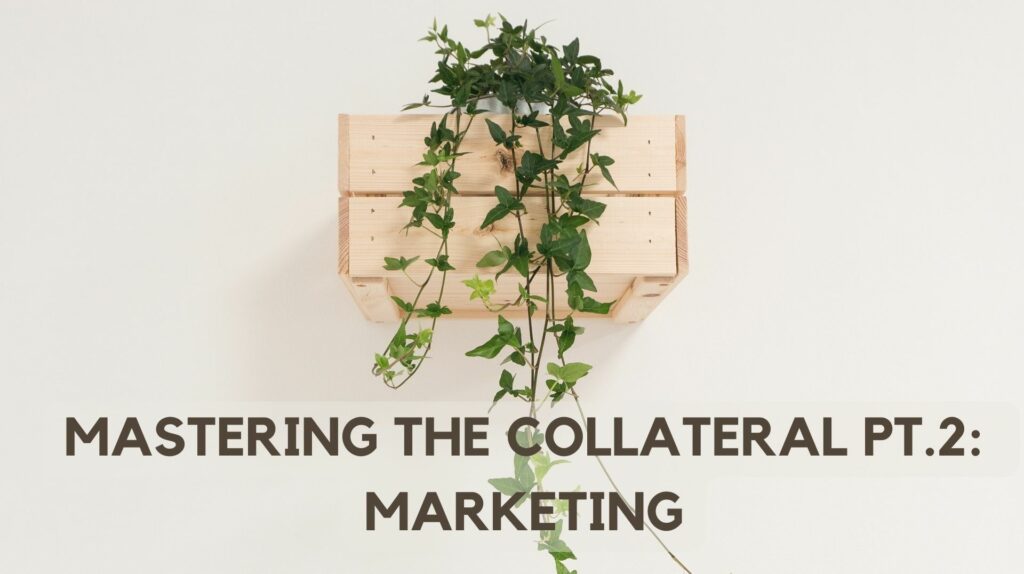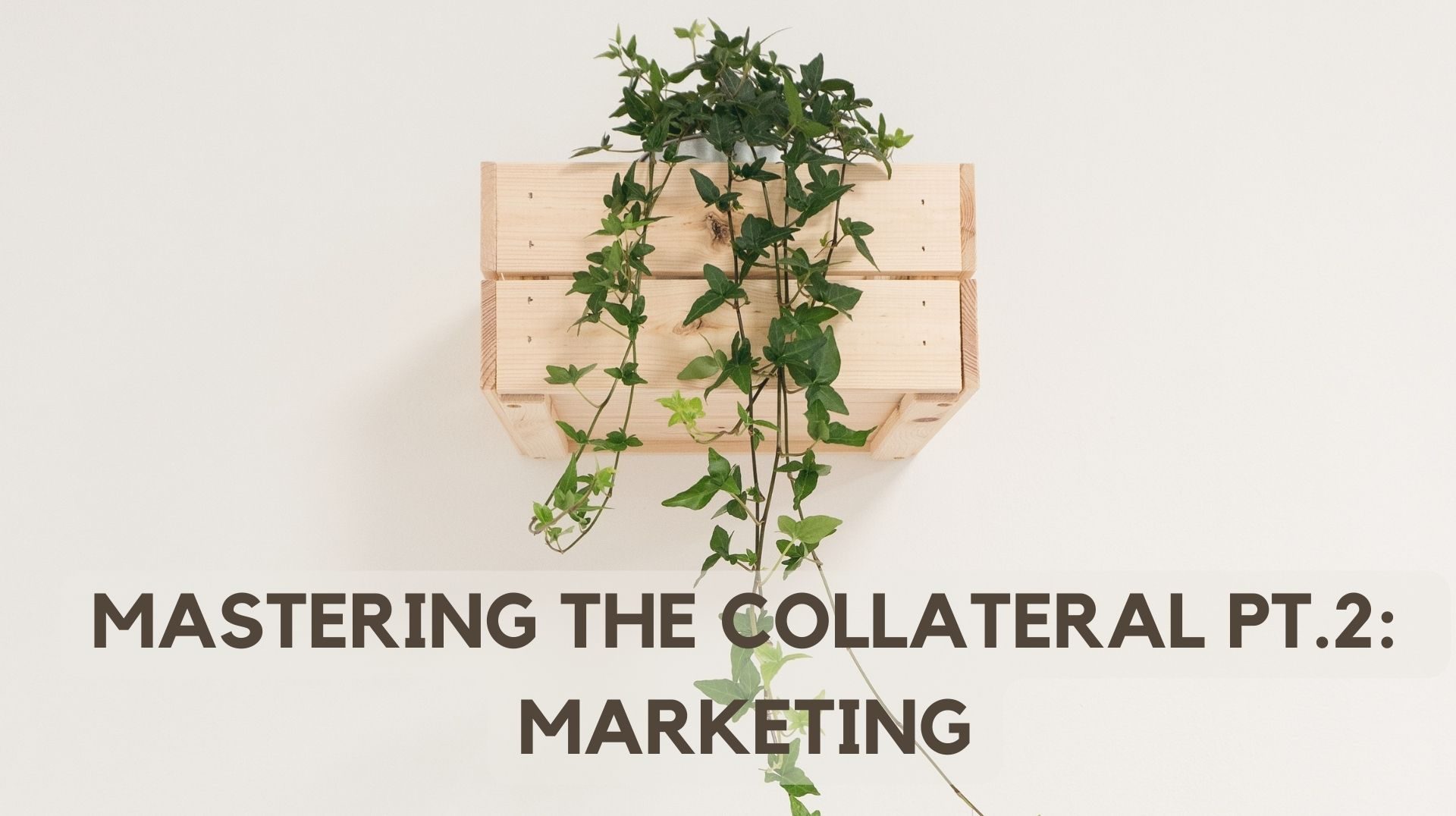Sustaining a successful business is a process that always continues. In the previous article, we’ve established how to start this process. However, this was just the beginning of the story. Today, we will discuss ways to make your business thrive using marketing collateral.
Table of contents:
Let’s Refresh
However, first of all, let’s refresh your memory on what is collateral. If you want more in-depth information, dive into part one of the article. If you are like me, though, and want to get to the fun part ASAP, here’s what you need to know.
Primarily, collateral is an assemblage of all media that can be used to promote or establish a business. Think back to an infographic you have created for your Facebook page. It can be classified as a type of collateral. What’s more, a Facebook page itself is also a type of collateral as it is basically one of the pillars for the presence of your business.
In the previous article, we discussed a few things that can be used for branding collateral. Today, though, we will talk about marketing collateral and what types are best for the business according to its purpose, product, and even location.
Whatever type of collateral you choose, it is crucial to ensure its perfection. You can easily do that by using Approval Studio to review the assets. Being one of the best proofing tools, it offers you multiple ways to review, comment, and discuss the mockups that can be used as a part of your collateral. Don’t hesitate to book a demo now!
Marketing Collateral
As it was mentioned previously, branding collateral is more of a checklist for a new business. Things used there are realistically applicable to each brand. You can view those as a solid basis for the growth. However, now the real continuous work begins. The things we’ve previously discussed do not ensure the recognition of your brand on a level enough to make a profit. What can do that, though, is marketing collateral.
As you can see in the picture below, there are…many types of collateral. Each has its own purpose, audience, and aim. These words sound familiar, right? You know exactly where I’m going. You see, marketing collateral is a highly individualized thing, requiring constant reviewing and control. Depending on the position of your business, its goals, or even the stage of development, it will need different types of collateral. So, practically speaking, the three dimensions we’re looking at are end purpose, audience, and cost.
Let’s illustrate that by using our imaginary heated dinnerware business model. We’ve already established its branding collateral in the previous article. So, if you want to have the whole picture, be sure to check that out first.

Fiery pt.1 (Just ̶Ma̶r̶r̶i̶e̶d̶ Launched)
We will start with the stage every business owner experiences: a sweet “just-launched” phase. The world seems brighter, people friendlier, and customers flowing right in. Or are they? To ensure customers really do appreciate our business just as much as I do, here’s what I’d do with Fiery:
- Flyers/brochures. These types of collateral are usually grouped as they work under the same rules. You see, Fiery has a physical shop in one of the big European cities, which allows it to distribute flyers and brochures. As a business with a location where customers can reach it, it is fantastic to have at least some amount of printed collateral. It will be possible to get a specific audience interested in your product but only spend a little time online. However, this only applies to businesses with a rather broad target audience and a physical location. I mean, Approval Studio can print perfect brochures, but there is no need as there will neither be a space to distribute those nor the people. As an example, look at this flyer here. Saving all the recognizable colors and fonts used in logo/website design/social media helps people to make associations quicker.

- Displays/exhibitions. Fiery is a business that sells dinnerware with a never-seen-before technology. It is only logical to participate in a display, exhibition, or even a local fair to promote the technology and show a little behind the scenes. It won’t be extra expensive. However, it will help you reach many people who are willing to spend money. Furthermore, familiarizing the public with dinnerware, especially if your product is based on a new technology, is crucial.
Fiery Pt.2 (Reaching Millennials)
After establishing a physical location, it is always nice to consider the possibility of online shopping. Of course, Fiery has its social media updated regularly, but it’s not enough to profit significantly. Here are some things Fiery can do to work in this sphere.
- Emails. Re-engagement and thank-you emails are a must if you are an online shop. The first ones usually remind people about abandoned shopping carts, a sale, or a holiday. And thank-you emails are just a really lovely addition to the dry, soulless confirmation email. Tell your customers how much you value them, and spice it up, making many of those emails. It may take a while, but the emotional response from the client will be worth it.
- Packaging. Another crucial part of online sales is packaging. Or, to be precise, its extras. I’m not talking about packaging in its usual way, as it is the type of branding collateral necessary for each business with physical products. Instead, it is about adding extra free items to the package. When I get a candy/fancy tea bag/cute card in addition to my box, I’m more likely to order again and tell everyone about the company.

- Endorsements. Of course, in marketing, you have to get into endorsements sometimes. Especially if you need to gain popularity in wider regions. Endorsing your product is an amazing way to try out a new audience, which might not have discovered you without this celebrity. However, be careful with who you choose, and study their audience too. It’s useless to sell forks to people using chopsticks.
Fiery Pt.3 (It Was a Bad Idea)
It may now seem that every collateral type can be used for the business. However, this is not the case at all. As mentioned previously, different types of collateral have different purposes you may or may not need to achieve. You need to thoroughly assess each type’s outcomes and cost to determine whether it is an excellent idea to start.
For example, one of the collateral types is a welcome kit a customer gets after buying something from a business. This is a great idea, as it creates a specific emotional bond with your business, which then grows into a more prolonged relationship with it.
However, having welcome kits for a company like Fiery is just too pricey and, therefore, useless. Such kits would be a nice addition to subscription-based products.
Another example would be podcasts and e-books. While a report on how the technology works may be a valuable asset to Fiery’s marketing collateral, e-books would be a waste of time. Similarly, podcasts would work for a business with more complex, multifaceted products. Or ones that are being constantly developed. Otherwise, it’s a waste of resources.

Our last example will be explainer videos. This type of collateral might be nice for a business like Approval Studio (check out our YouTube channel by the way), where you have software with an extended range of possibilities that are easier to discover using an explainer video. However, for a heated dinnerware shop, it might only be useful as one short Instagram story video on how to use it rather than a series of explanatory videos.
Final Takeout
What you have to take into account is that this article talks specifically about our imaginary business. It means that unless you are a heated dinnerware shop, you should not use it as a step-by-step guide. However, you can easily use its ideas to create your own collateral. It’s always helpful to reflect on all the types of collateral you can use based on their purpose, audience, and cost. A correct understanding of these three dimensions helps your business to grow. And nice assets reviewed by Approval Studio will make the outcome even better. So, keep calm, approve assets, and we’ll see you next year!

 TEAM SOLUTIONS
TEAM SOLUTIONS WORKFLOW SOLUTIONS
WORKFLOW SOLUTIONS



 REVIEW TOOL
REVIEW TOOL PROJECT MANAGEMENT
PROJECT MANAGEMENT TOOLS & INTEGRATIONS
TOOLS & INTEGRATIONS
 CLIENT INTERVIEWS
CLIENT INTERVIEWS









